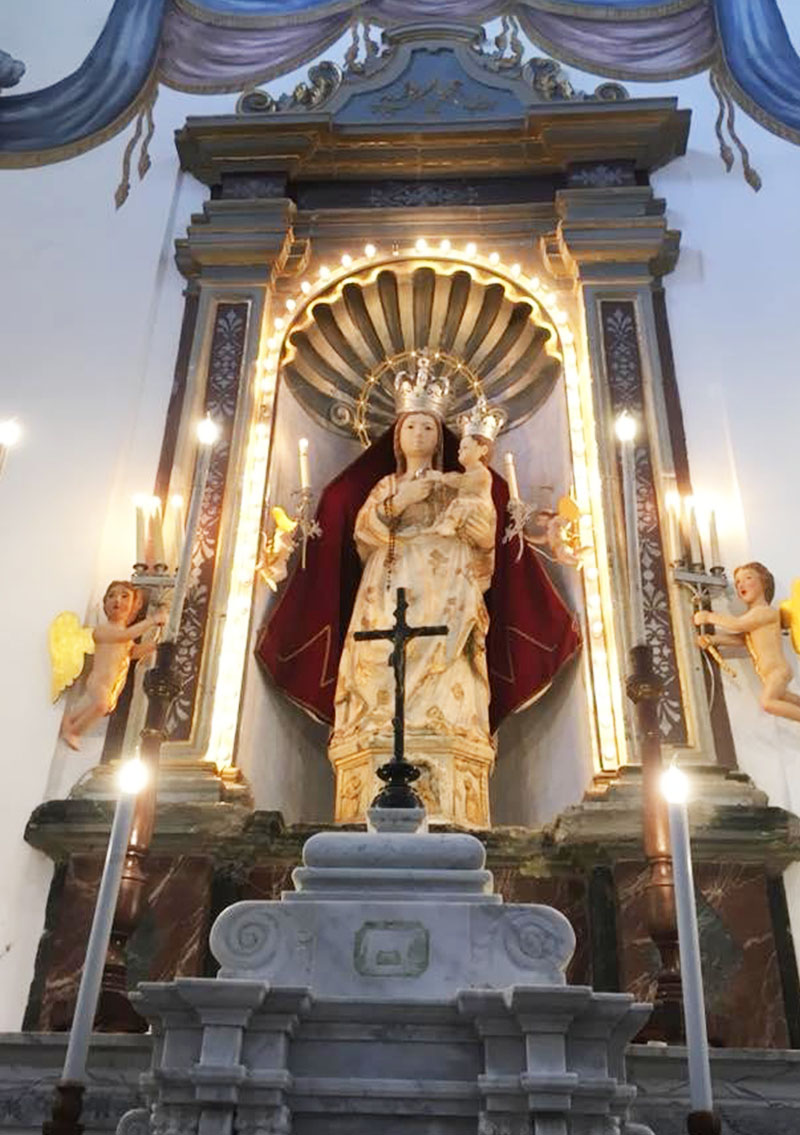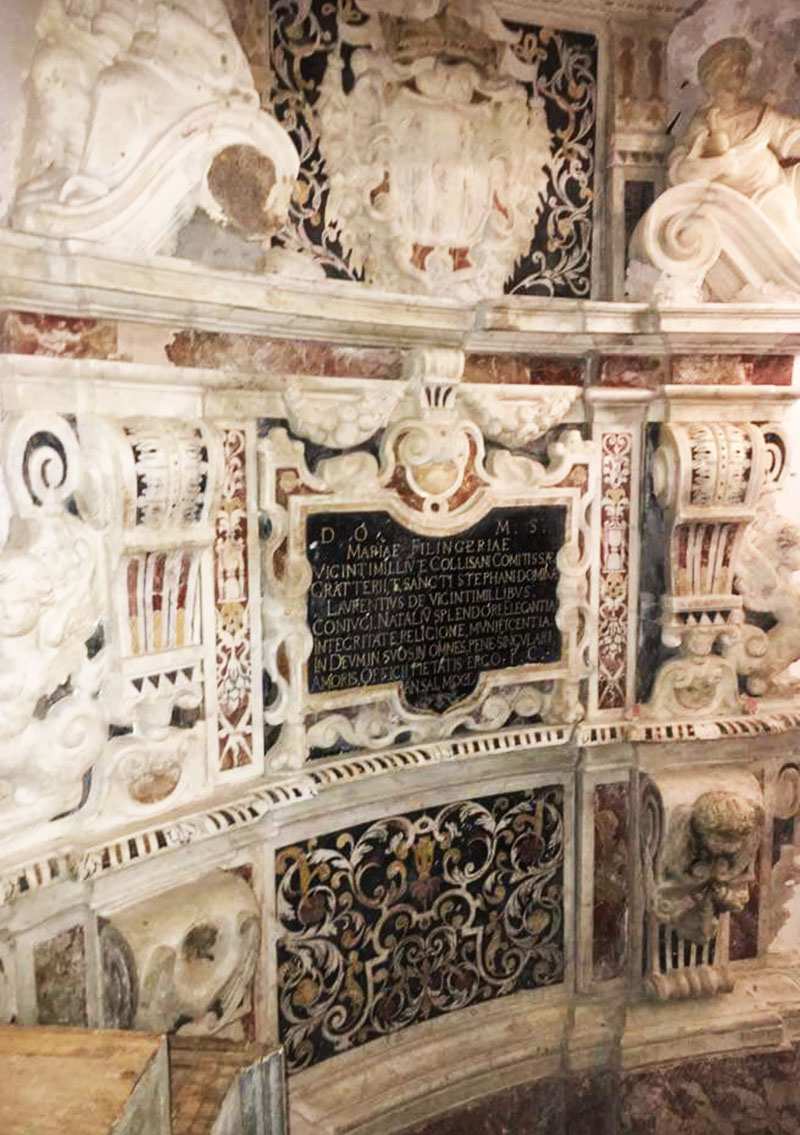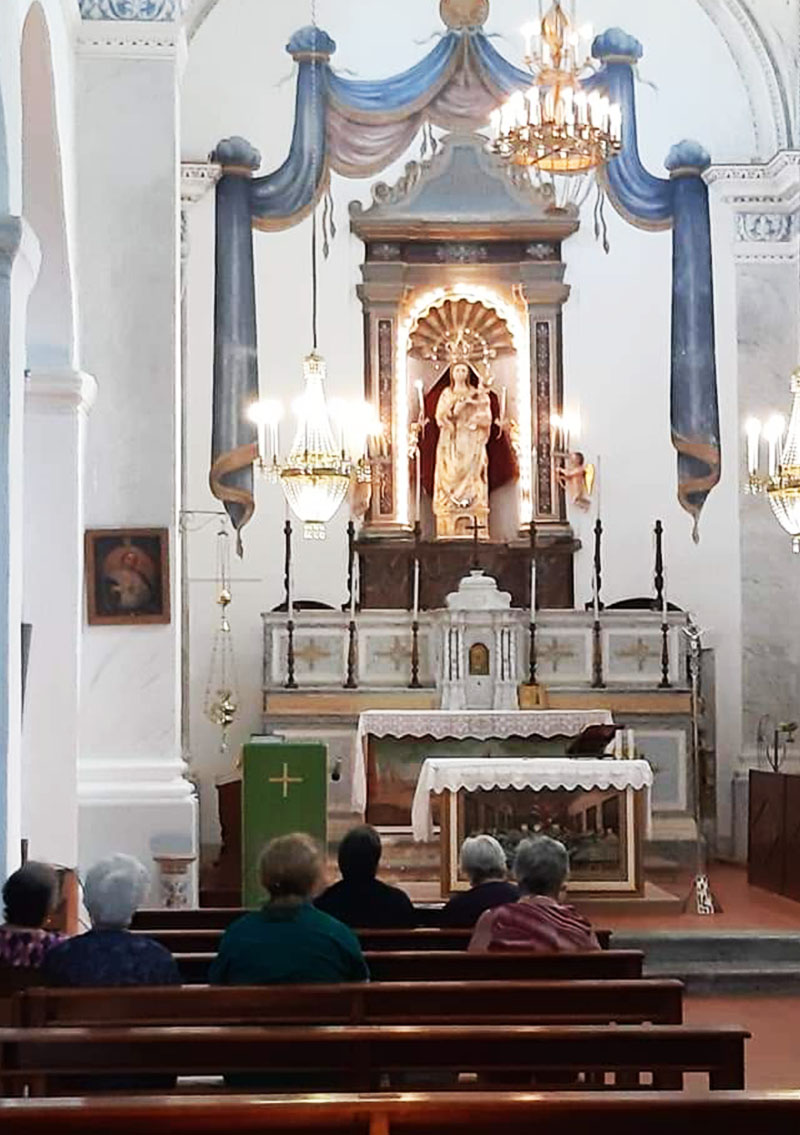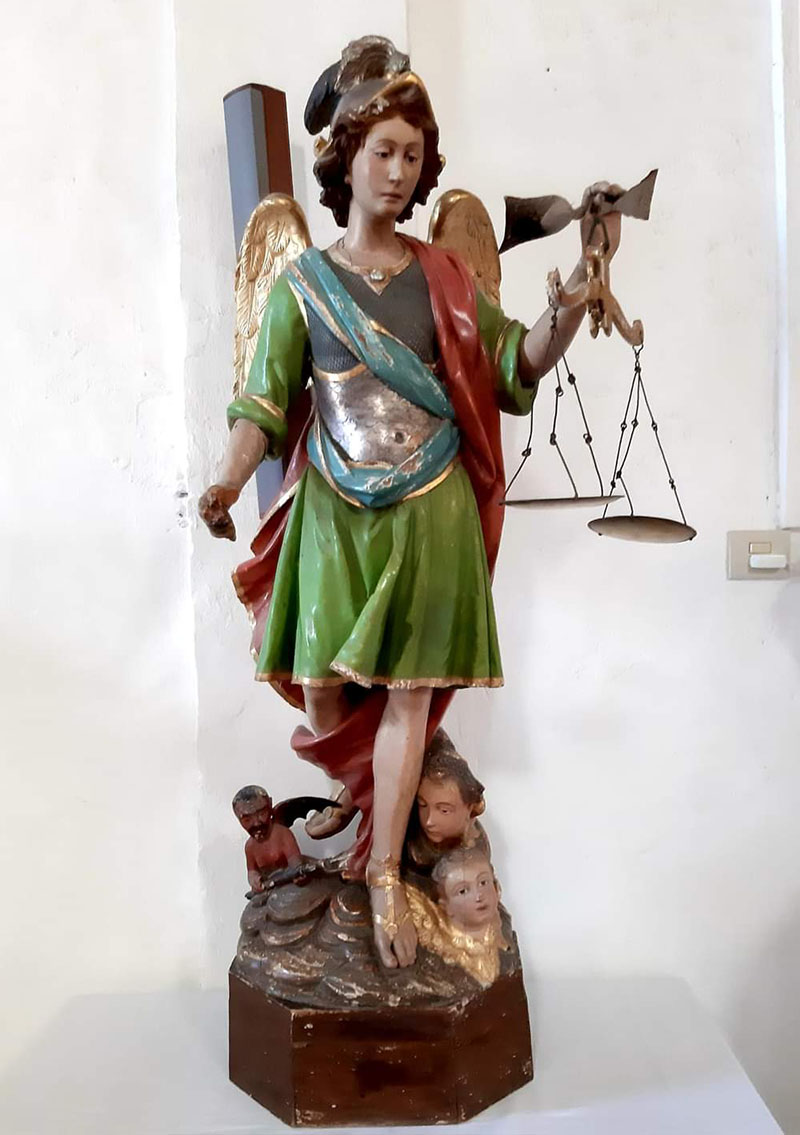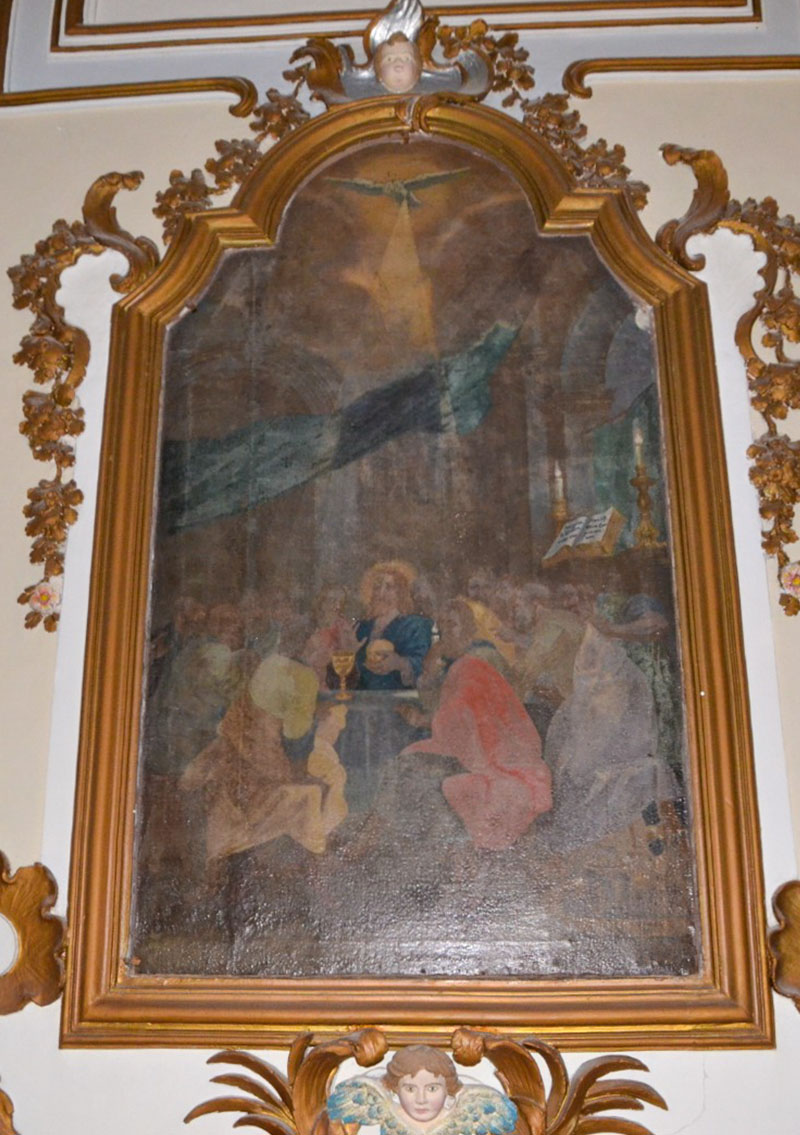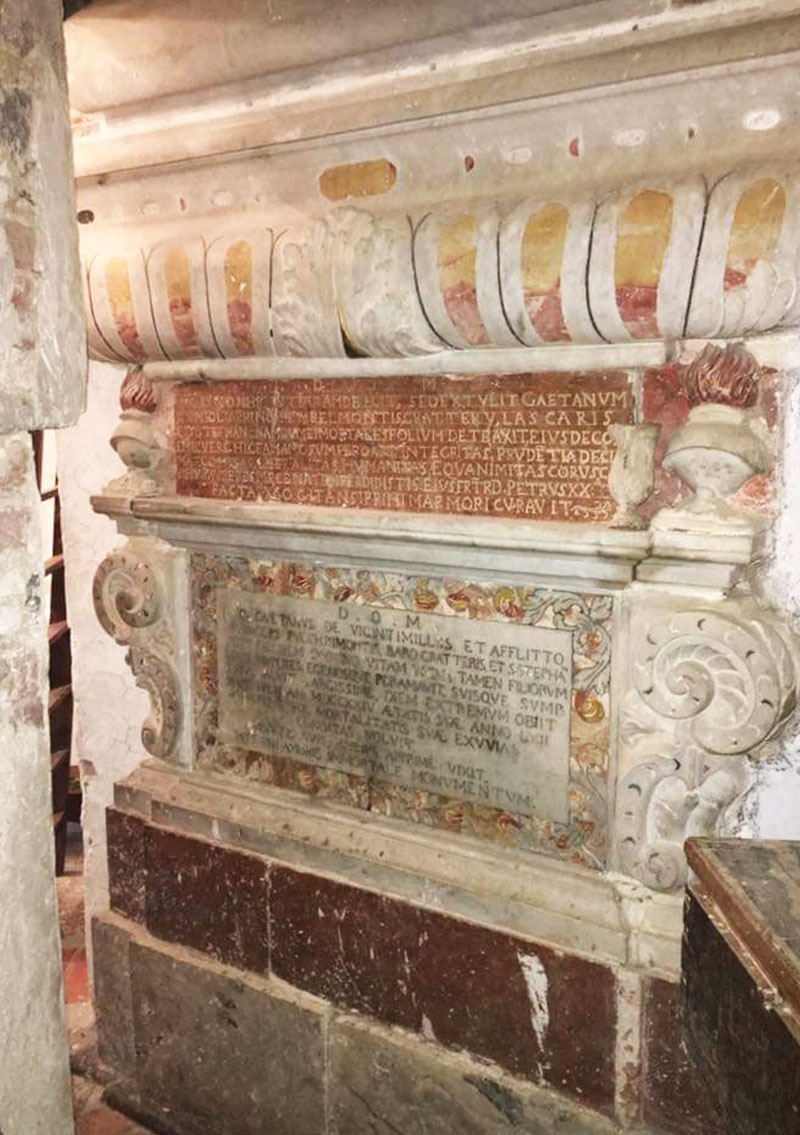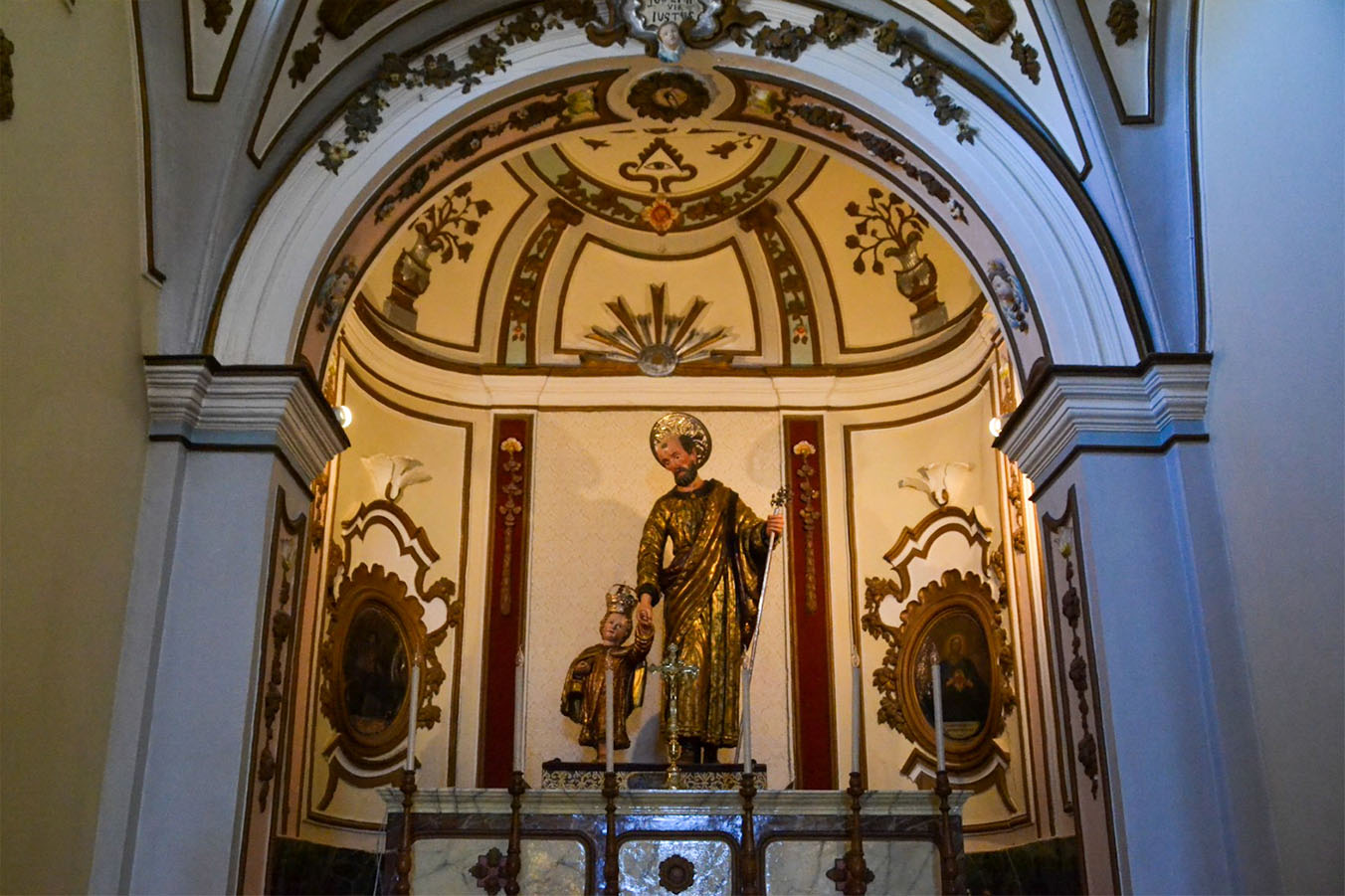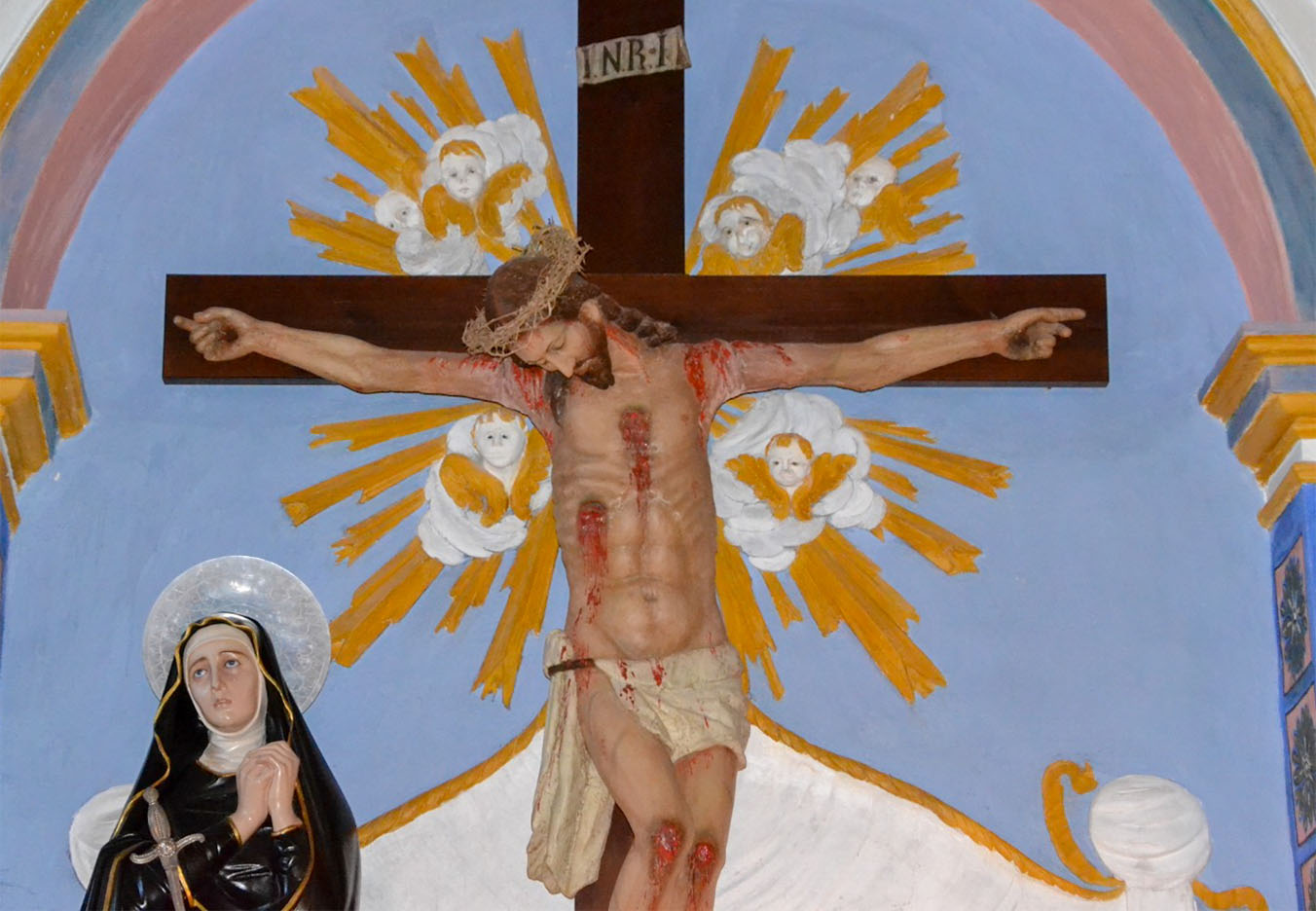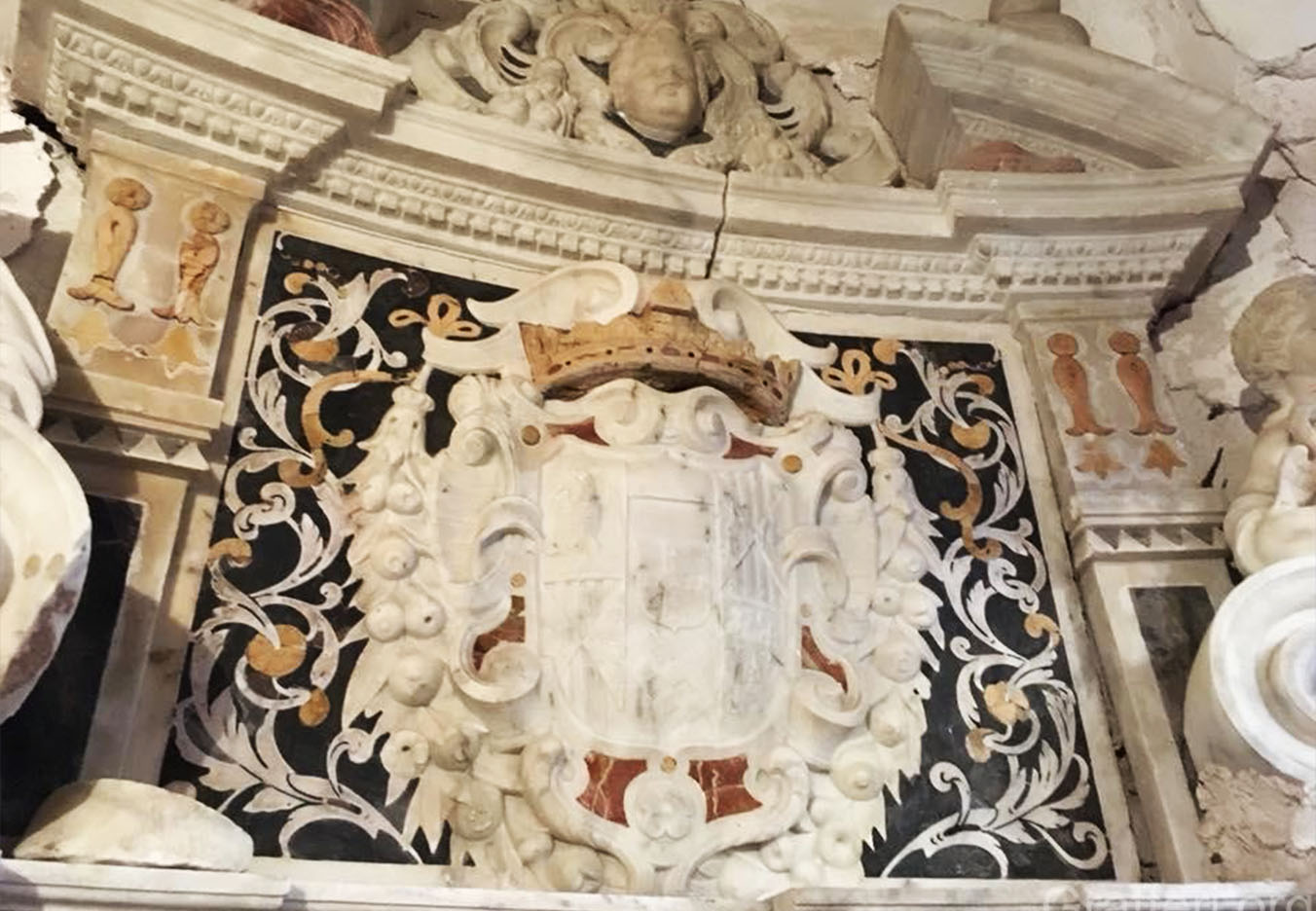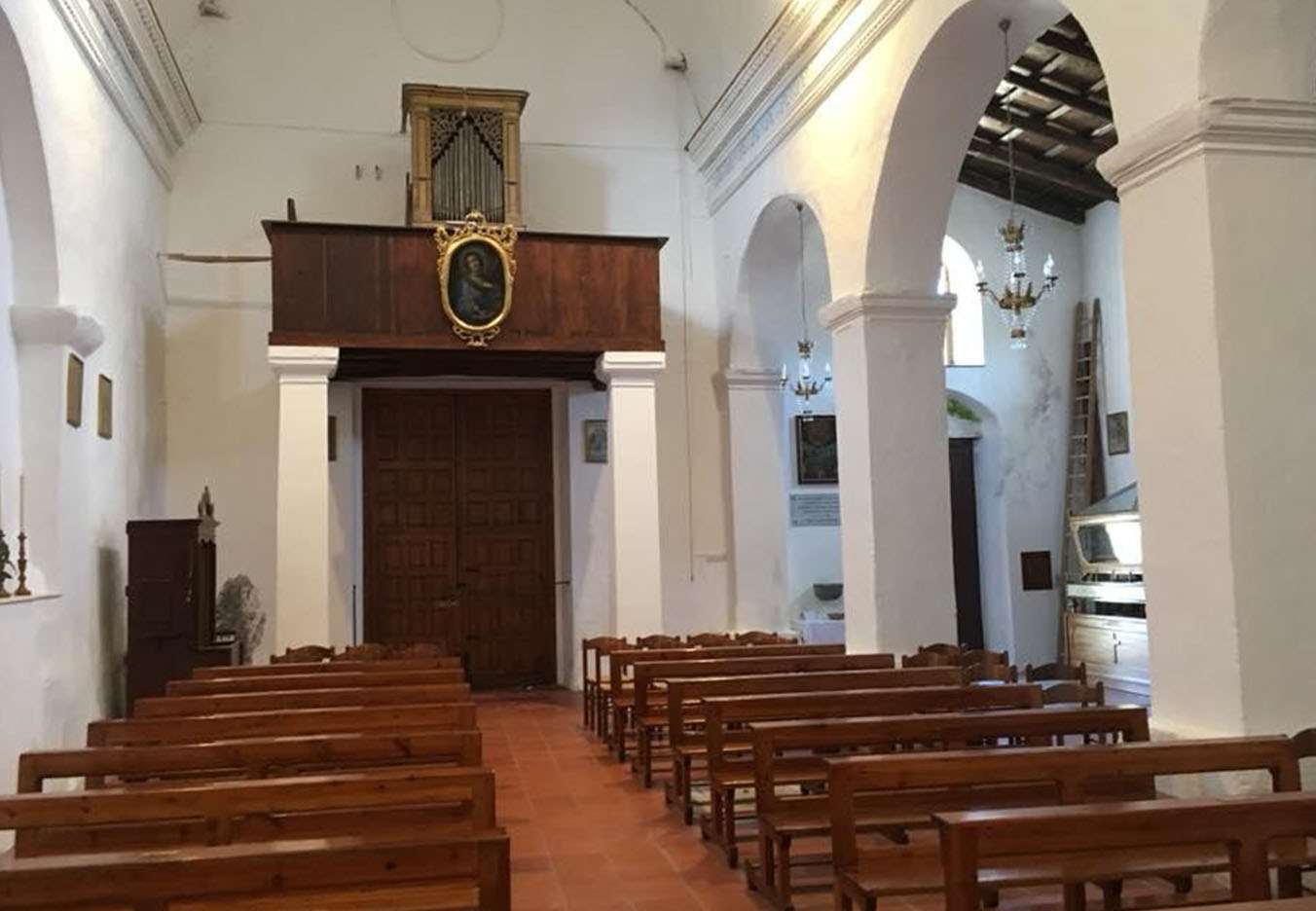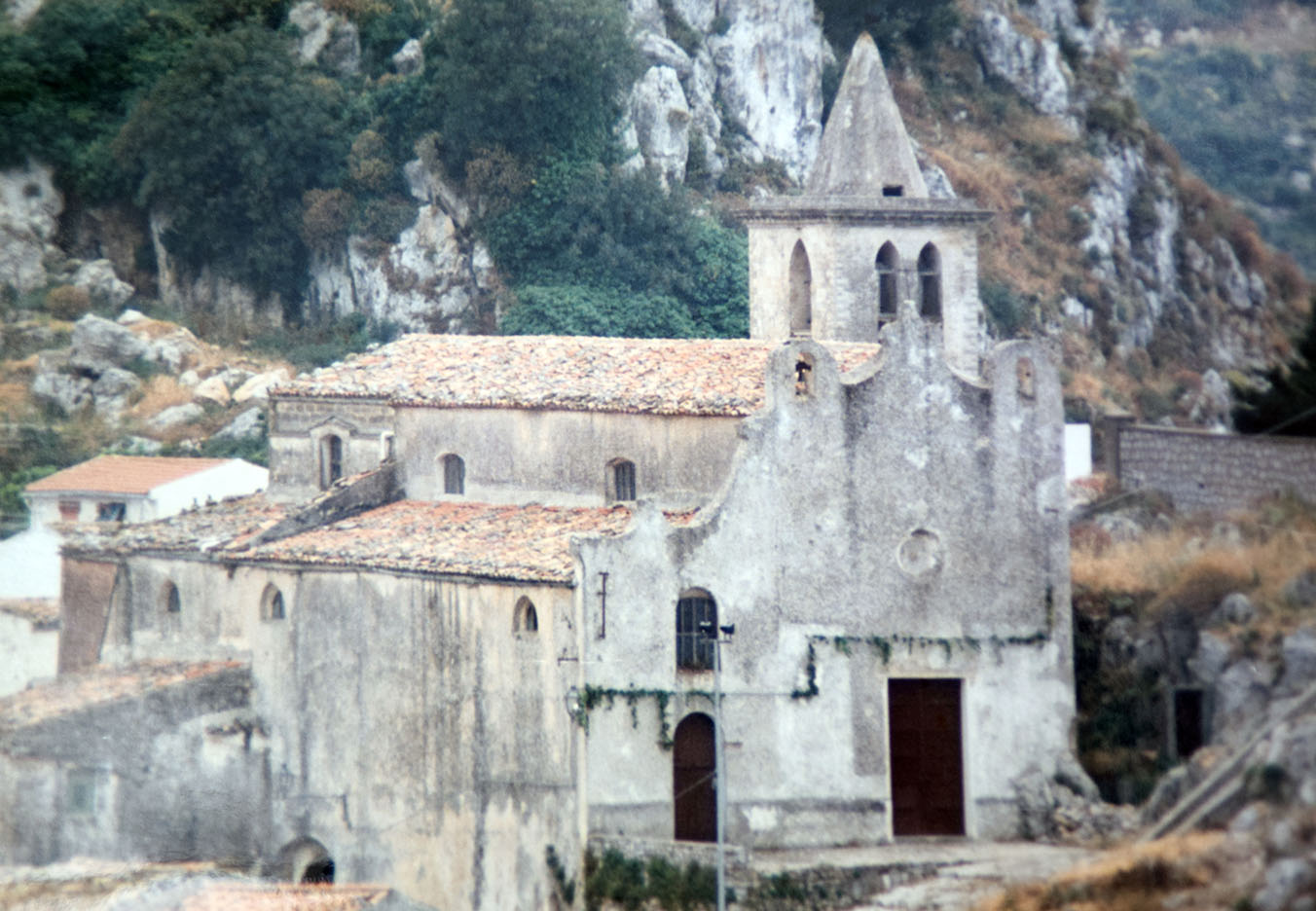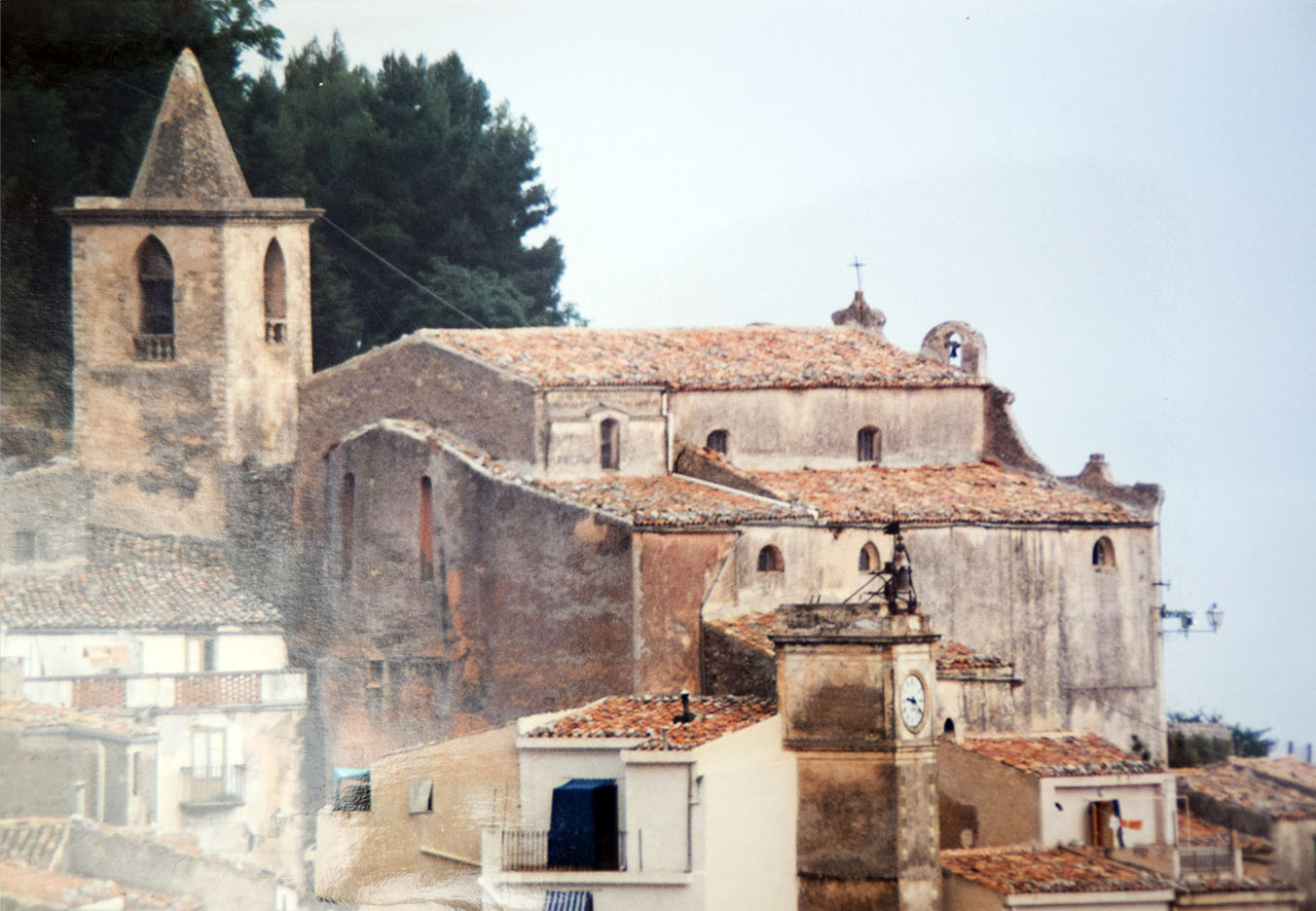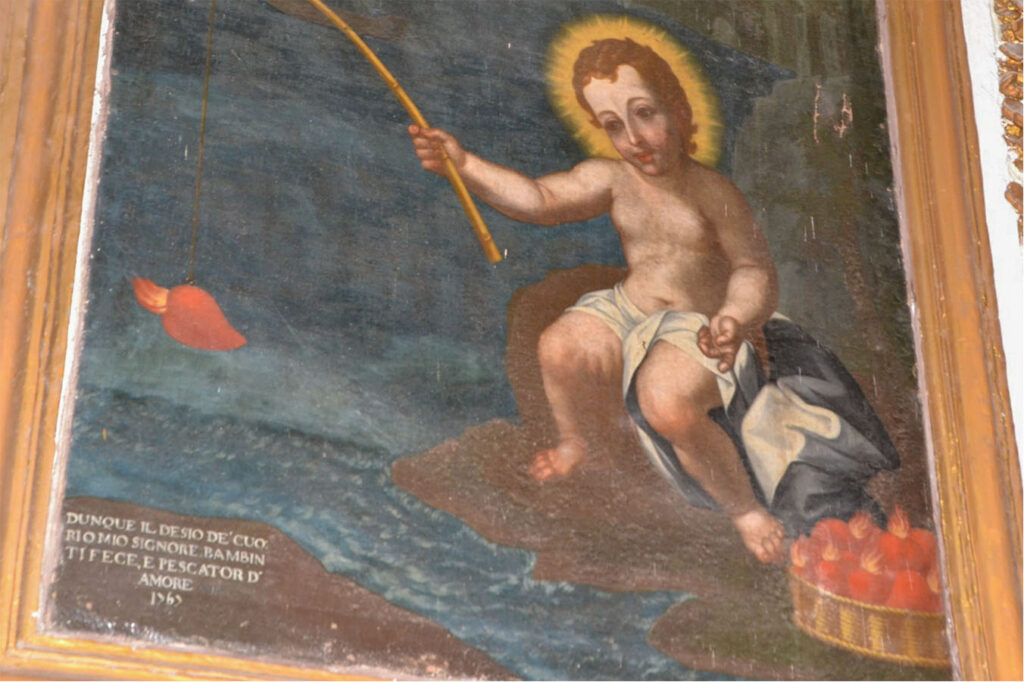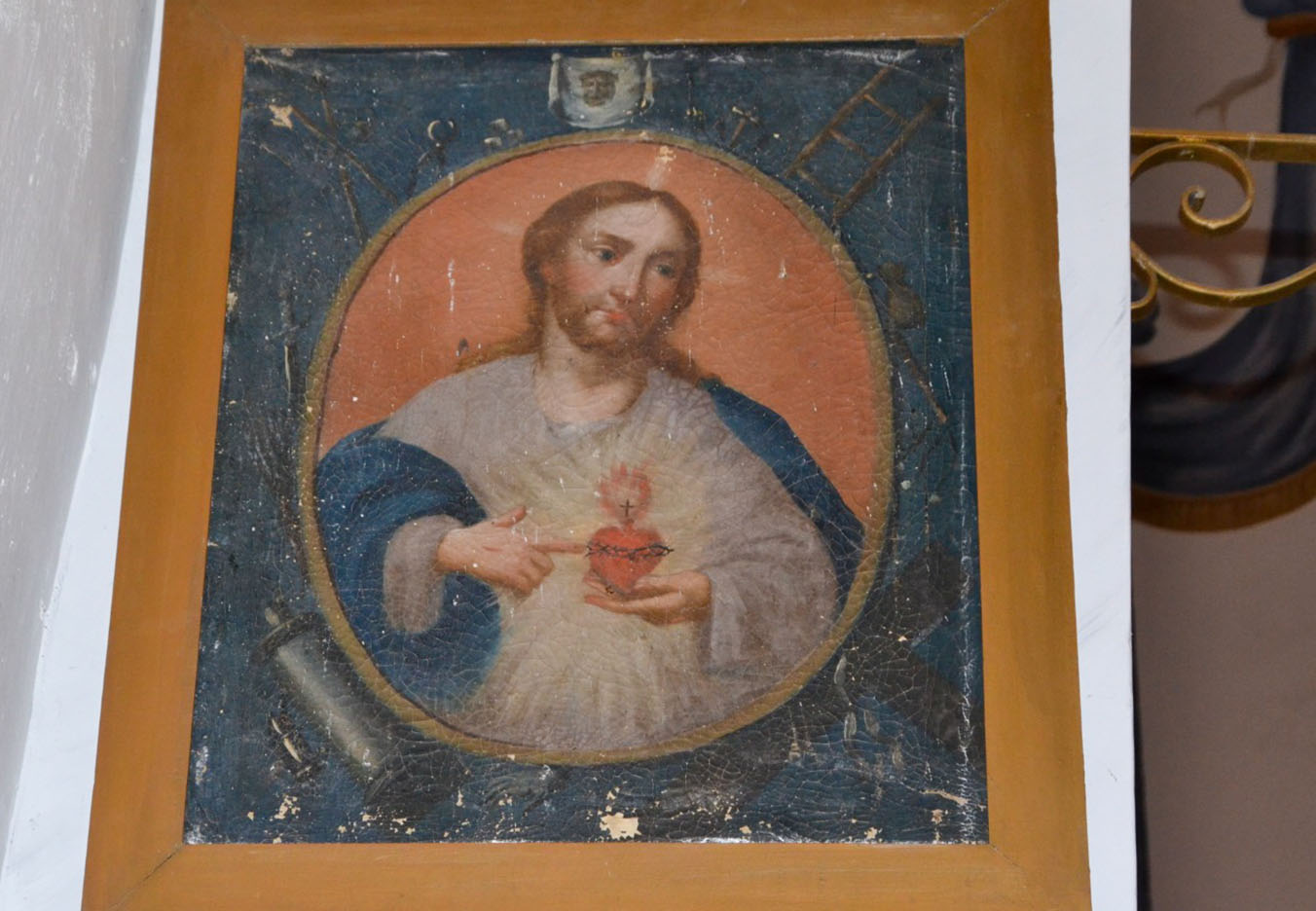In the presbytery, surmounted by a cross vault decorated with plant motifs in 1905 ex magno pietatis opere, you can admire two canvases: one on the right side, which depicts St. Leonard of Noblat intercedes for the liberation from the chains of the evil one, the other on the opposite side, depicting the Madonna della Sapienza (both from little churches that no longer exist).
In the left side chapel, dedicated to St. Joseph, was the ciborium of the SS. Sacramento of 1494, probably the work of Giorgio da Milano, the latter also uprooted and transported to the Nuova Matrice at the end of the century XIX.
The golden wooden statue of St. Joseph, on the other hand, comes from a church of the same name that was once located in the castle area. This image, sculpted by Francesco Reyna and painted by Vincenzo Di Giovanni (the same authors of the statue of St. Andrew the Apostle in the church of the same name) was commissioned by Antonino Mogavero towards the eighties of the century. XVII (Scileppi, op. Cit.). Inside the same chapel there are two paintings that respectively depict the Last Supper and the Child Jesus on the bank of a river fishing for hearts (both from 1767).
Two other small ovoid-shaped canvases are located behind St. Joseph: on the right side the Heart of Jesus (where we read ex devotione magister Dominici De Maio, year 1767), in the left one the Good Shepherd of the same style.
The presence of these two canvases, depicting Christological Eucharistic subjects, confirm that in the apse of the same chapel, there was placed the marble Eucharistic case today admirable in the Chapel of SS. Sacrament of the Matrice Nuova. The church building houses several chapels with related sacred images.
On the wall on the right side, next to the small statue of Saint Catherine of Siena, there is a chapel with a canvas depicting Saint Dominic, the founder of the Order of Preachers. Further on there is the chapel with the wooden statue, presumably from the end of the sixteenth century, depicting the Madonna del Soccorso called “Madonna della mazza”, coming from a church of the same name located in the lo spitali district but no longer existing today.
This is followed by a small image of the Archangel Michael and a precious wooden pulpit with the emblem of the Ventimiglia Lords sculpted on the back. Thus, as in the pulpit of the Mother Church, here too there is a protruding arm holding a precious ivory crucifix of the century. XVII with a cartouche in which there is the inscription – I.N.R.I. Jesus Nazarene King of the Jews – in three languages: Latin, Greek and Hebrew.
On the right-hand side wall is dedicated to scenes from the Passion of the Lord: the chapel with the canvas depicting the Flagellation of Christ on the column, commissioned by Maria Culotta in 1719; the chapel of the Crucifix with the Virgin of Sorrows at its feet and finally, the Urn with the dead Christ with articulated arms, a wooden statue from the second half of the seventeenth century, attributable to the masters of the school of Frate Umile da Petralia.
Above the urn there is a canvas depicting the Deposition of Christ from the Cross, stylistically very similar to the works of Caravaggio with the typical chiaroscuro games. In the past – as can be seen from ancient documents of the clergy of Gratteri kept in the State Archives of Palermo – there was also an altar dedicated to Saint Lazarus and St. Mary Magdalene, of which a small canvas is still preserved today, an imitation of the one found of Caravaggio.
Finally, above the entrance door, there is a wooden choir loft that houses the oldest organ kept in Gratteri, the one built in the eighteenth century. Next to the church, within the enclosure of the disappeared Ventimiglia castle, stands a bell tower with an octagonal spire that houses seven bells of different sizes (from different churches), renovated in 1936 by the emeritus citizen Carmelo Cirincione.
One of these bells bears the date of 1390; another that of 1587, commissioned for devotion to San Leonardo by Pietro and Carlo Ventimiglia; that of the Rosario was built in 1712. In the church there are the two oldest Confraternities of Gratteri: that of the SS. Sacramento, under the title of Saint Joseph , and that of the Madonna del Rosario founded in 1570.



